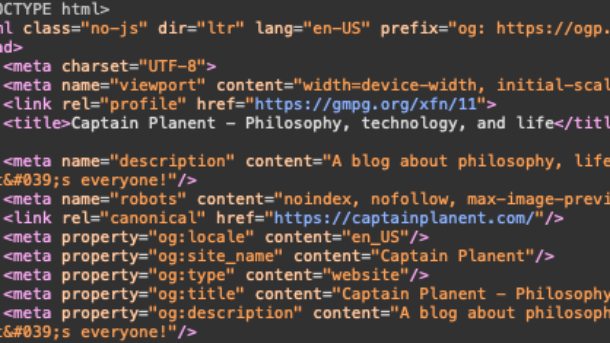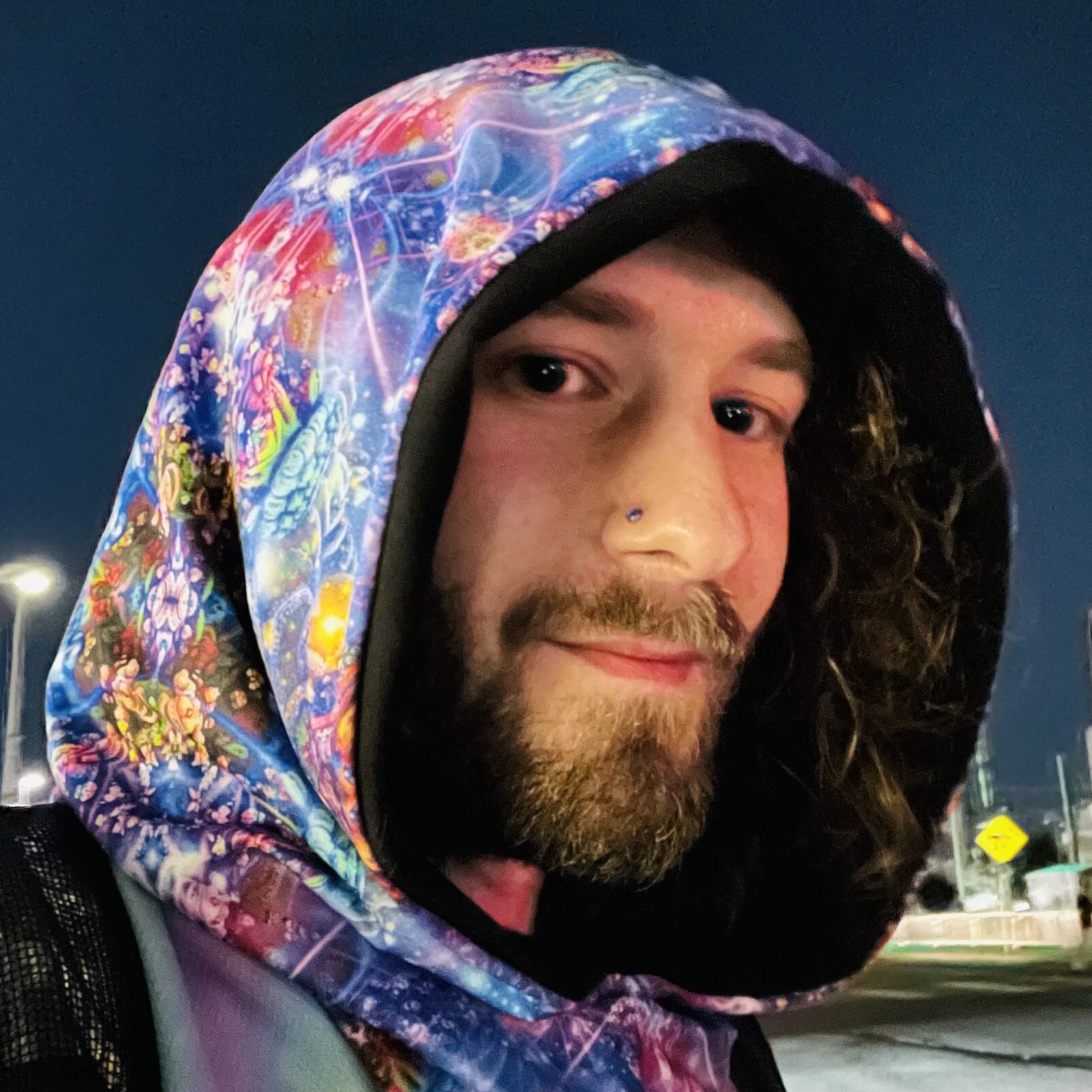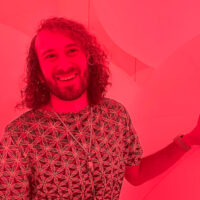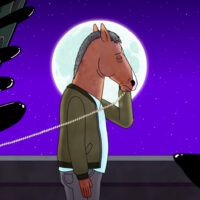A computer is an education device; it is, in fact, a direct reflection of your own imagination, your own intelligence, your own programming skills. And once you are given the freedom in which to create things and to see the immediate response on the screen, then it becomes a very enjoyable experience. You go on to involve yourself in many other things.
Unnamed computer store manager in 1979 (video of interview)
“I wish I was an artist,” I often thought to myself around age 15. My friends were all the artsy type. They played instruments, or they drew, or they designed and made clothes. I wanted to draw, but putting pencil to paper was hard. I strived to come up with ideas, but I only drew abstract shapes, which was not my goal. Furthermore, I judged myself harshly for what I perceived as a lack of creative talent or lack of original ideas, and I compared my interests and methods of self-expression to others’ creative endeavors. This resulted in a tendency for me to avoid pursuing hobbies I was naturally drawn towards. It even resulted in me excluding these from my definition of “hobby.” It also did not help that I came out when I was 14, and my dad responded by tearing down all the posters in my room and banning any form of self-expression he considered too queer. (I used to wear rainbow pride paraphernalia and hide it in my bag on my way home from school.) I wanted an outlet for self-expression, but I didn’t feel comfortable exploring any method to do so.
While I never thought it in concrete words, looking back, I seemed to believe being an artist meant producing something akin to music, movies, tv, theater, a written work, some kind of visual piece, etc. Art is an old cultural concept with a handful of longtime established mediums and modes. During this period of time, I never considered that there might be other forms of creative expression I could call “art.” However, I did feel this creative self-judgement in modern contexts as well.
I frequently judged myself and compared myself to my friends when it came to my choices in the video game The Sims. For the unfamiliar, The Sims is a video game with the intended purposes of creating a neighborhood of families who interact with each other. The player creates “Sims,” which are the simulated humans of the game, along with Sims’ houses and communities. Sims are semi-autonomous. Sims will attempt to live out somewhat calm lives, and the player can choose to drive Sims’ decisions or change Sims’ settings whenever they would like to intervene. Generally, I made Sims that were adult versions of myself and my friends. My Sims lived out fantasy adult lives that were, while luxurious, not based outside the realm of reality. I perceived my choices as playing very tame Barbie, which I didn’t think was very creative. My friends, on the other hand, made up elaborate backstories for their Sim families. Their Sims were inspired by characters from anime they watched or original characters they made up. They frequently killed many Sims to role-play drama-filled scenarios. This style of play seemed so fun, but ideas like this never came to me. I only wanted to role-play “normal” adult scenarios, and I thought there was something wrong with this.
After high school, I continued my education with a focus in mathematics, which was my favorite subject during high school. In high school, I never considered math to be a form of art. At some point during my post-high school education, I began seeing math as art. Perhaps I was letting go of my old definition of art as I grew and saw more of the world. Perhaps it was because I was starting to practice more advanced mathematics, which often requires more creativity. If I was feeling like I was being creative, it would make sense that I would view what I was producing as art. It was probably some of both. If you do not consider mathematics an art form, and your primary exposure to the subject was in high school, I understand. Our education system does math an immense disservice, and students only get the chance to see how beautiful math can be if they pursue it into adulthood (which requires they have the interest and means to do so). To convey this differently, imagine if the only visual art classes we got to take in grade school were paint by numbers, and only college-level art students were allowed to create anything original. This is essentially how we teach math. (This analogy is stolen from A Mathematician’s Lament.)
I think it was this shift in viewing math as art that started to open my mind up to seeing other hobbies and pleasures as art. Consider setting up this website. Websites are a relatively modern concept, but I still think I could convince most people that a website is an artistic endeavor by showing them one with a creative layout. Many probably already consider websites art at this point. (Do you disagree? If so, please let me know in the comments.) However, is it just the layout that’s art?
I want my website to be easy to navigate and pleasing to the eye. Navigation and ease of use includes things like the form to sign up for email updates. If this was a Tumblr blog or a Twitter profile or any other social media landing page, I wouldn’t even consider this tool or how to implement it. One of the benefits of social media platforms is that platforms handle visibility and updates for creators: users “follow” or “subscribe,” and then users know they’ll be notified whenever the creator posts an update. In addition, platforms handle managing the technicalities of subscriber lists for creators. If someone wants to unsubscribe, they just “unfollow” or whatever. If they want the creator to forget about their data GDPR-style (Wikipedia), the platform handles it. On an independent website, I’m on my own. Without convenient email updates, people who find my blog may forget to bookmark it, lose the address, and never come back even though they want to. This is something I do as a user/audience member on the internet. This is the primary reason I knew I wanted a way to mass email blog updates. Privacy is important to me, so I wanted to respect my readers’ privacy; the service needed to have good privacy practices and have a good reputation for them. In addition, I needed a way for users to reach out if they wanted their data removed, but I wanted to avoid posting an email address directly on the blog. Thus, I needed to find another service for email submission forms and a way to automatically send the emails to myself. All while keeping privacy in mind. For me, implementing systems like this is a creative process, and it’s one of my favorite creative processes.
This took me down a rabbit hole: I was seeking a service for users to sign up for mass emails, which was run by a privacy-respecting company. I also wanted a way for users to contact me at any time, while ensuring our privacy and security as best I could. In addition, all of this needed to stay within my budget. I was able to accomplish my goal. Along the way, I learned about using forms on websites and integrating them with an SMTP service (that’s for sending emails generated by the submission form). I also learned about rules and regulations for mass emails, along with certain hoops I had to jump through to create a mass email list people could sign up for while staying compliant. Solving these kinds of problems is often when I feel I’m being my most creative self. The end product is two simple, clean contact forms on this website, along with an easy way to sign up for email updates. After a period of testing, I feel all of these services/processes are easy to use from the user perspective, and they keep all our data secure and private to the best of my ability. I am proud of what I made, and for me, these stacks of interconnected software I’ve put together are art.
To me, an artist is anyone who thinks creatively to express their ideas to the world. This definition implies art is incredibly broad, and everyone has probably been an artist at some point during their lives. I think I stand by that.
Organization is another example of unconventional art that comes to mind. At least it’s art for me. Every few weeks, I stumble upon a new goal I want to accomplish with technology. Maybe a friend asks me to help build out their Discord server. Perhaps I start digitally cataloging all of my medical records for the last 15 years because I realize they’re all over the digital world after multiple interstate moves. Both of these are examples of my creative organization at work. Discord servers have categories, which have channels within in them, and the organization can affect engagement. (For the unfamiliar, discussions on Discord servers happen in channels, which are essentially siloed chatrooms with names like “general chat,” “gaming chat,” “pictures of pets”, etc.) If channels are inconveniently far apart in the interface, it can be annoying for users to navigate back and forth when chatting. If categories don’t make sense, users may hesitate before discussing new topics because they aren’t sure where to start their conversations. I want users to be enthusiastic about engaging on the server, and I believe the server needs to feel as effortless to navigate as possible to encourage enthusiastic engagement. As the server grows, more channels will be needed, and massive reorganization can be jarring to users. Thus, I think it is important to consider the future and where growth is most likely to occur, so growth can feel more natural without frequent channel/category overhauls.
Today I start a new creative journey: writing this blog. Or I go public with it, I guess I should say, as I started the project a few weeks ago. I’d like to share a boundary I’ve established for myself when it comes to the blog and writing. I’m sharing this with you to explain what you can expect from an update schedule:
There is no update schedule. As much as I’d like to tell you to expect an update every month or every other week, that’s not how my body and mind work. I will publish when I feel I have something to say, and what I’ve written is ready to publish. I am not going to force myself to write; that’s no fun for me. There may be two posts in one week, and then nothing for two months. I know topics will vary, and I’m excited to share!
I guess this is my art exhibition in a way. Do you consider yourself an artist? Do you enjoy any activities or hobbies that don’t fit into our typical idea of what art is? Please share in the comments!












When we were in high school, one of the roads on the way to school was repaved and I still to this day find myself thinking, “the people who paved this road are artists” (and sometimes I still share that opinion with people who are at my conversational mercy in a vehicle). I can expand on why very easily: its clear that who did it took great care in their work, its worn beautifully well over the last 15 years. It’s a smooth ride. It captures that Americana feeling of riding on a carefree road. The teamwork that’s required on jobs like that.
I think I’ve had the privilege of viewing so many different types of expression as art. For example: we went to what I’m going to call a snowflake high school that I think encouraged (subvertly) the idea that study, reflection, science, nature, math, innovation, etc etc are all within that scope of art. I’m happy to have shared some of that casual participation in arts with you. Looking back at it now, I don’t think I ever thought of you as a non-creative – a non-artist. From making birthday cards to cd art covers, small comics, and maintaining a website that included interactive art-ing itself… And if I could make an observation: you’ve been arting left and right and all around since the time I met you.
For me… Caring about people is an art. The art I explore along the way I hope will foster my care for myself.
One of the many things that has struck me about this entry? post? short non-fiction essay? (all of the above) is thinking about digital communication spaces and designing those interaction pathways. I really appreciate this perspective and it already has me self-reflecting.
Thank you for sharing this part of yourself!
It’s always a joy to read/hear/see someone express themselves or find themselves or just make headway towards something they enjoy. I agree with everything you’ve said here about art. Art can really be anything. There are so many things that some people might not even consider, like you did yourself.
Math, the sciences, medicine. The beauty of that single equation to explain it all.. condensing an entire wall of work down into a single.. simple equation (F=ma, e=mc^2, etc).
I look forward to reading your thoughts on whatever subject you take on. And.. as is customary on the internet.
FIRST!
LIKE AND SUBSCRIBE! SMASH THAT BELL! Wait.. this isn’t youtube..
Thank you for sharing your insights. I feel as if I was able take a little trip into Captain Planent’s head. I appreciate thinking outside the box and exploring what my own creativity means.
Math as art brightened my day… thank you Ian. You are happily connected in my brain via friend Carolyn math professor and of course your Mom. Good day to you